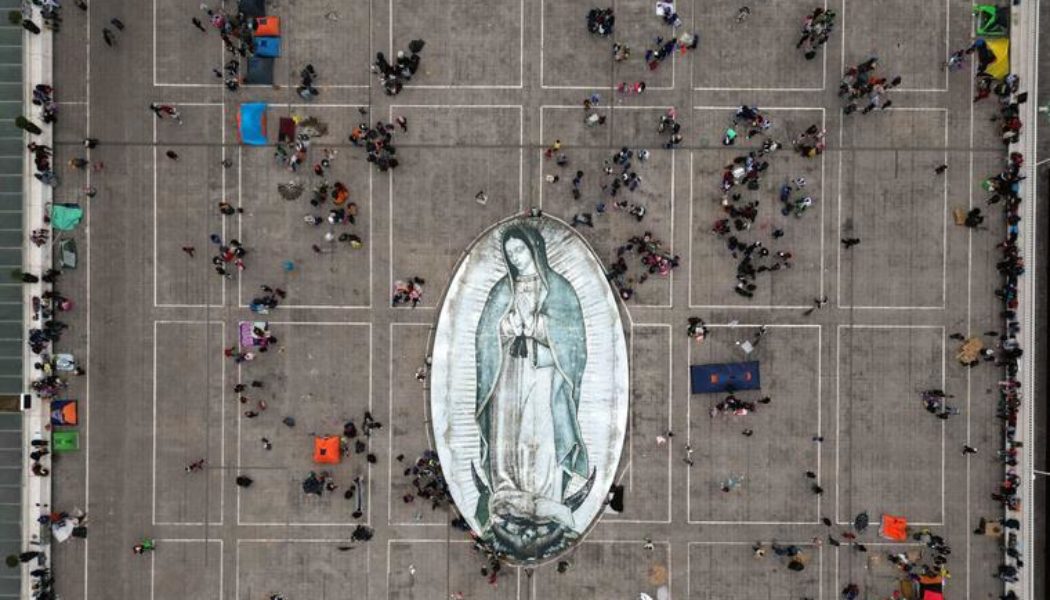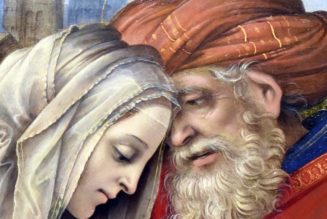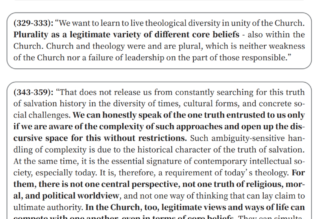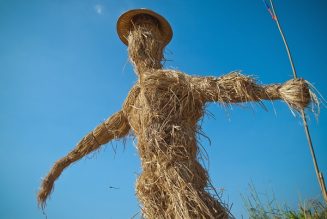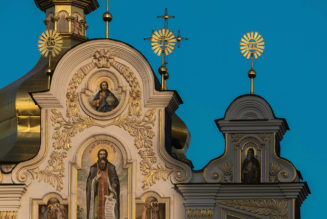
The new Vatican document on how to judge purported apparitions of Mary and other supernatural events tends toward caution but also offers more clarity and transparency, experts told the Register.
Going forward, local bishops are not supposed to make a public pronouncement on a reported apparition until the statement is approved by the Vatican’s Dicastery for the Doctrine of the Faith (DDF), which is now taking a more active and more public role in examining such reports.
“I appreciate the document. It’s well-written, because it clearly explains what the problems were in the past, and it also moves toward transparency,” said Gloria Falcão Dodd, research professor at the International Marian Research Institute at the University of Dayton in Ohio. “There is a call here, first of all, for transparency and, secondly, for supervision. Before, the bishops were a little bit more on their own.”
Some observers think the new norms might speed up public statements from Church authorities and prompt public pronouncements from the Vatican on some well-known reported appearances on earth of the Mother of Jesus.
“This seems like a very reasonable approach to managing a challenging situation discerning apparitions, while they’re still going on,” Ralph Martin, professor of theology at Sacred Heart Major Seminary in Detroit and president of Renewal Ministries, told the Register.
Lowering Standard May Increase Speed of Review
The new 7,700-word document, “Norms for Proceeding in the Discernment of Alleged Supernatural Phenomena,” which was released Friday in Rome, is more than six times as long as its 1978 predecessor, which it replaced starting on Pentecost Sunday. It applies to reported appearances of Mary and other heavenly beings as well as reported Eucharistic miracles.
The new document takes away Church authorities’ ordinary ability to declare that a purported event is supernatural, replacing that most positive of possible findings with Nihil obstat, which means in English “nothing hinders” Catholics from accepting it. (The Pope can still declare “the supernaturalness of the events,” the new document says, but it notes such situations are rare.)
The document defines Nihil obstat this way: “Without expressing any certainty about the supernatural authenticity of the phenomenon itself, many signs of the action of the Holy Spirit are acknowledged ‘in the midst’ of a given spiritual experience, and no aspects that are particularly critical or risky have been detected, at least so far.” In such cases, a local bishop “is encouraged to appreciate the pastoral value of this spiritual proposal, and even to promote its spread, including possibly through pilgrimages to a sacred site.”
The lower standard implies a lower level of official recognition by the Church but also offers a better chance of getting an answer quickly — under the current standards, the document notes, since 1950, “only six cases have been officially resolved,” even though reports of apparitions have increased.
“So the previous guidelines took so long and were too high a standard,” Dodd said.
Like its predecessor, the new document also includes a judgment of “not supernatural.” In between are four shades of gray, reflecting various levels of confidence in the authenticity of the supposedly supernatural events.
The document details criteria for assessing whether to judge a purported supernatural event positively or negatively.
On the positive side are the credibility of the witnesses of the event, including their honesty, emotional stability, sincerity and humility; the orthodoxy of the messages stemming from it; the unpredictability of it, as if from heaven and not from the people involved; and the fruits of it, which include prayer, conversions, vocations and acts of charity.
The negative list is longer. It includes the possibility of what the document calls “manifest error about the event”; doctrinal errors; promoting division in the Church; pursuit by purported witnesses of “profit, power, fame, social recognition”; immoral actions committed by the witnesses around the time of the event; and mental-health problems of witnesses.
“I don’t get a read of ‘Let’s be more open’ from the document. If anything, I get a read of ‘Let’s be more hesitant,’” said Mark Miravalle, a theology professor and Mariology expert at Franciscan University of Steubenville in Ohio and at Ave Maria University in Florida. “At the same time, it’s perfectly legitimate and proper to have criteria to identify things that are false. Those are very harmful to the Church.”
Miravalle said he hopes Church officials remain open to apparitions even as they test them.
“While it is critically important to identify false apparitions, let’s not silence heaven,” Miravalle said. “Let’s not have an attitude that would say that we don’t want to hear what St. John XXIII said are the salutary warnings of the Mother of God.”
“We want to be humble and reverent, not to silence Our Lady from our side if in fact heaven wants to give us more direction in pursuing the faith in a humble and direct way,” Miravalle said.
Church pronouncements on purported apparitions, even from the Vatican, are not necessarily final. The new document says it “leaves open the possibility that, in monitoring how the devotion develops, a different response may be required in the future.”
Miravalle pointed out instances in which the Vatican changed course on purported supernatural events, such as when Rome in the 1920s silenced Padre Pio amid reports that he miraculously received the wounds of Christ and suppressed the Divine Mercy devotion in 1959. Padre Pio is now (since 2002) St. Pio of Pietrelcina, and Divine Mercy (since 2000) is a feast of the universal Church.
“I think it’s important to note that even when the Vatican makes a statement on a purported apparition, that it’s not infallible but disciplinary, which the document confirms can be adjusted or entirely changed,” Miravalle said. “For example, as in cases like Divine Mercy and Padre Pio, where we went from prohibition to approval, from condemnation to canonization.”
What’s An Apparition?
The Catechism of the Catholic Church defines an “apparition” as: “An appearance to people on earth of a heavenly being,” such as Jesus, Mary, an angel or a saint.
The Church teaches that so-called public revelation ended with the death of the last apostle. The Church does not require that Catholics believe in any apparition not found in Scripture.
Even so, the Church has endorsed certain post-Scripture appearances on earth of Mary and other heavenly beings as “worthy of belief.”
“Throughout the ages, there have been so-called ‘private’ revelations,’ some of which have been recognized by the authority of the Church,” the Catechism says (67). “They do not belong, however, to the deposit of faith. It is not their role to improve or complete Christ’s definitive Revelation, but to help live more fully by it in a certain period of history.”
Church officials investigate and sometimes pronounce on reports of such apparitions.
“Guided by the Magisterium of the Church, the sensus fidelium knows how to discern and welcome in these revelations whatever constitutes an authentic call of Christ or his saints to the Church,” the Catechism states.
The Vatican has approved 16 apparitions of Mary, according to MiracleHunter.com, which tracks them. They include Guadalupe, Mexico (1531); Lourdes, France (1858); Knock, Ireland (1879); and Fatima, Portugal (1917).
The website lists nine others that have been approved by a local bishop but have not been officially recognized by the Vatican.
Michael O’Neill, who runs “The Miracle Hunter” website and is a member of the Mariological Society of America, told the Register he is curious to see how, under the new document, the Vatican deals with apparitions that have been approved by a local bishop but never commented on publicly by the Vatican, such as those in Champion, Wisconsin (1859); Akita, Japan (1973); Cuapa, Nicaragua (1980); and San Nicolas, Argentina (starting in 1983).
“That will be interesting to me going forward, with how this document will be retrofit to those situations,” O’Neill said.
Dodd, who is also a member of the International Pontifical Marian Academy, said Catholics wondering about how much confidence they should have in various reported apparitions may get an answer from Rome relatively soon.
“This is an opportunity for getting a clear statement. And I think that the document is going to be applied, probably quickly, to certain unapproved apparitions, to give them some kind of statement,” Dodd said. “It gives discernment to the faithful in how to approach situations and messages.”
One such situation is Medjugorje, a village in Bosnia and Herzegovina where six people have reported visitations by the Blessed Virgin since 1981. About a million a people a year visit the site.
Medjugorje has a unique status in the Catholic Church. The Church has never endorsed the apparitions at either the diocesan or Vatican level, but in May 2019 Pope Francis approved Medjugorje as a pilgrimage site.
Catholic apologist and author Jimmy Akin told the Register he thinks Medjugorje may be the impetus for the new apparitions document from the Dicastery for the Doctrine of the Faith.
“I strongly suspect that the need to resolve the Medjugorje case was a principal reason for the revision of the norms, as the DDF appears to have found it hard to classify under the old system,” said Akin, a Register contributor.
“I thus suspect that we may get a ruling on it in the near future, and that ruling is likely to be the third — Curatur (‘It is to be attended to’) — which applies to a phenomenon that has ‘various or significant critical [i.e., negative] elements’ but has nevertheless ‘spread widely’ and is connected with ‘verifiable spiritual fruits,’” he said.
Medjugorje has drawn devotees and skeptics within the Church, each side using Church standards to make a case.
It’s an example of how purported apparitions are often messy — even in widely accepted appearances of Mary, for instance, seers sometimes disagree on what they heard or describe it inadequately.
With that in mind, Dodd said the new apparitions document embodies a theme of Pope Francis’ pontificate — “accompaniment.”
“This document,” she said, “accompanies really everybody — the bishops, the alleged visionaries and the faithful — in walking in discernment, that we don’t have to have the perfect answer at the start.”
